|
The Iowa City Area Transit Study Survey offers the opportunity for residents to give their opinion on preferred aspects of three scenarios for Iowa City area bus routes. These changes aim to improve the speed, reliability, and frequency of the buses. The Transit Study scope is limited by the constraint that it must improve the bus system without any change in the allocated budget for the buses. Because of this, none of the scenarios expand the bus system without consolidating routes to make up the difference in the budget. Depicted below are the current routes which the Transit Study aims to improve. View a Side-by Side Comparison of the Transit Scenarios. Scenario 1, depicted above, aims to increase the frequency of popular routes, to simplify the route network, and to consolidate routes along major commercial and residential corridors. This consolidation centers mainly around downtown Iowa City, with only two high-frequency stops placed outside it at Towncrest and Oakcrest. This placement would shorten the reach of the transit system and may disadvantage Coralville and North Liberty residents. This scenario has the advantage of favoring the Iowa River Landing portion of Coralville, which holds many businesses and apartments, and promises to attract more riders to the system. Another advantage is the quicker run-times. A major complaint among residents is the inconsistency and infrequency of the bus system. If one bus is missed, a rider could be delayed 30 minutes to an hour, which greatly discourages residents who need transportation to their jobs, and to whom delay could mean unemployment. In this scenario, the Coralville route is broken up into six routes, which may improve the run-time of buses in Coralville, where the issue of delay is at its greatest. But the scenario does this at the cost of lessening the reach of the Coralville transit, and compelling riders to walk farther to catch the bus. Whether this trade-off is worth it will depend on the target ridership. The faster run-times will be better for workers, but the shorter reach will be worse for the elderly. If the city can offset this disadvantage with its on-call service, the trade-off may very well pay off. Scenario 2, depicted above, is a more moderate version of the first scenario, and so shares many of its advantages and disadvantages. However, Scenario 2 does not include the projected 15-minute run-times that Scenario 1 boasts, except for in a few CAMBUS routes. Shortening the CAMBUS run-times would be advantageous since CAMBUS is fare-free and attracts a lot of riders. This scenario lacks the quicker run-time to the Iowa River Landing however it connects the route downtown, which may help workers in the Iowa River Landing area, particularly hotel employees. Scenario 3, depicted above, expands service in the evening and on weekends. Based on CTC’s research on the transit needs of low-income workers, service in the evening and on weekends is acutely needed, and this scenario would be the most attractive to people who already ride the bus. This scenario also has the advantage of being able to gather data on the rates of ridership at times that the bus does not currently service, which would help the city ascertain the demand for evening and weekend services.
For commercial areas, weekends are especially important to service, since workers in the service industry work seven days a week (and often late nights). For this reason, evening and weekend access to the Coralville mall is especially important, as well as service to the hospital where shifts also extend late at night. This scenario also provides easier access to industrial parks in the southeast of town by consolidating the Broadway and Mall routes, benefiting low-income workers, which is one of the major targets for a public transportation system. While leaving most of the system unchanged may prevent reducing coverage in some areas, this scenario leaves the problem of speed, reliability, and frequency unsolved. And as the general trend of transit ridership in Johnson County has been decreasing, this may not be a satisfactory solution to a city that wants to turn around these losses.
0 Comments
Your comment will be posted after it is approved.
Leave a Reply. |
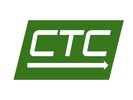
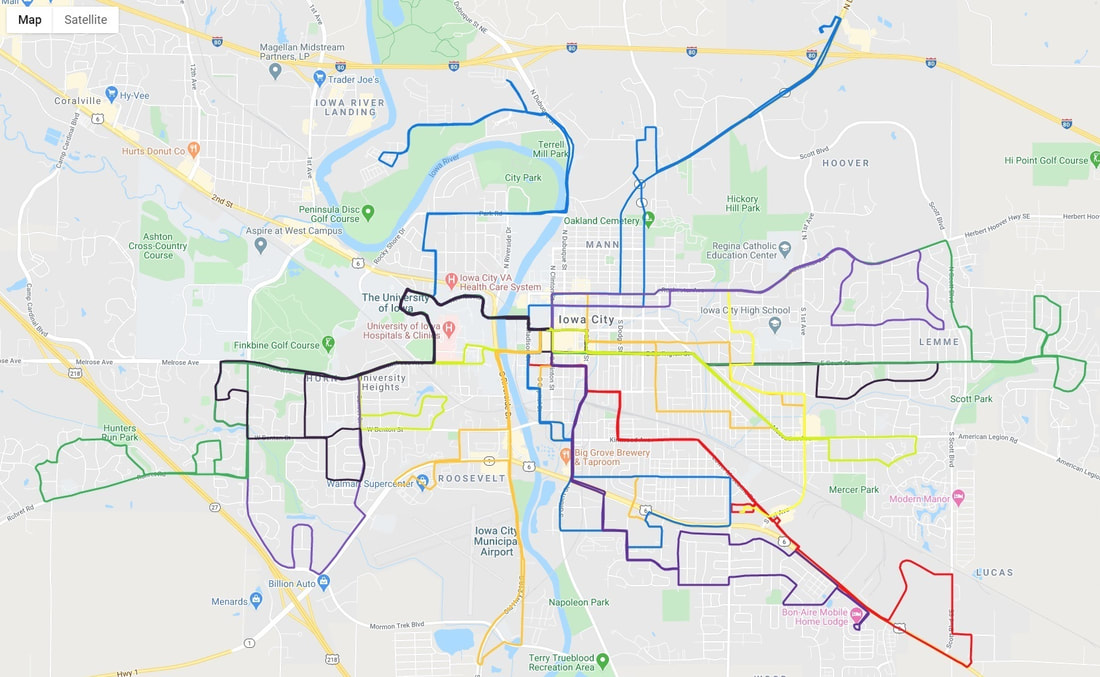
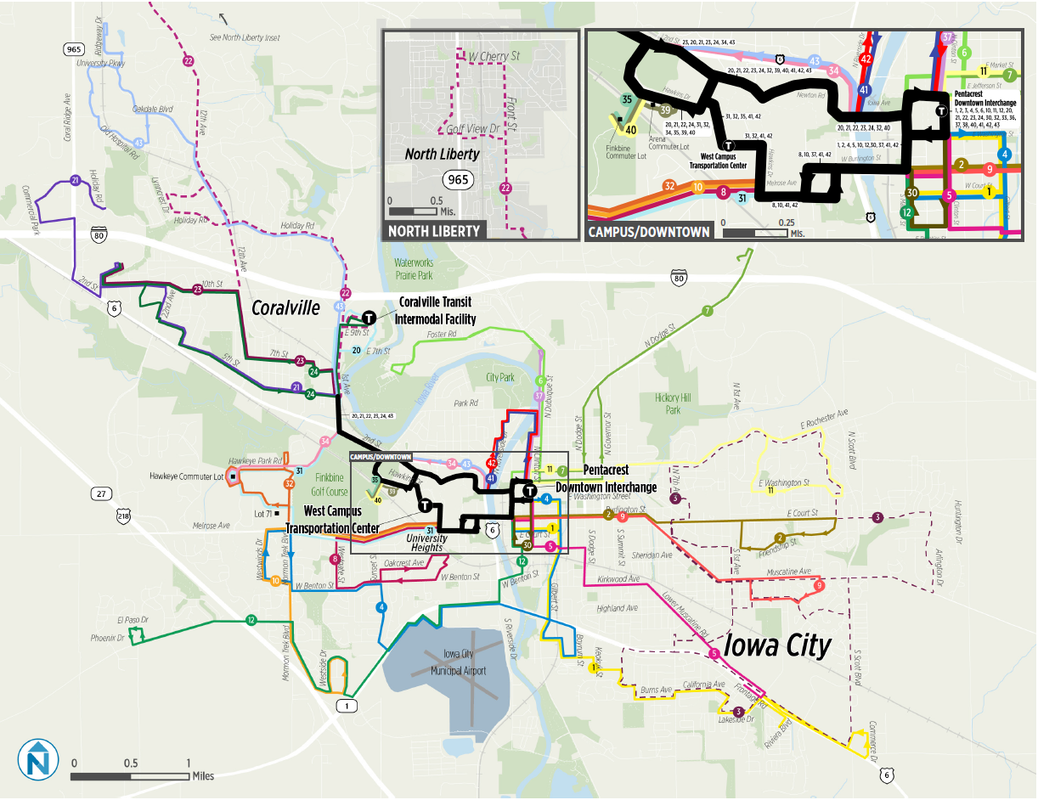
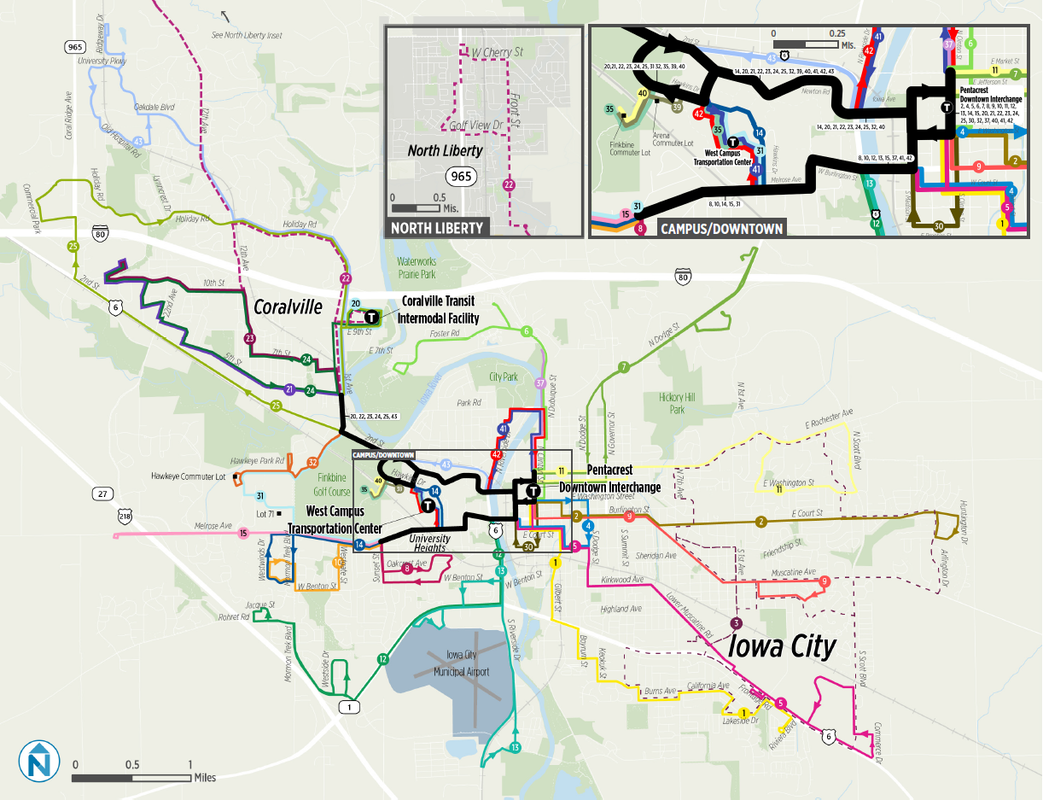
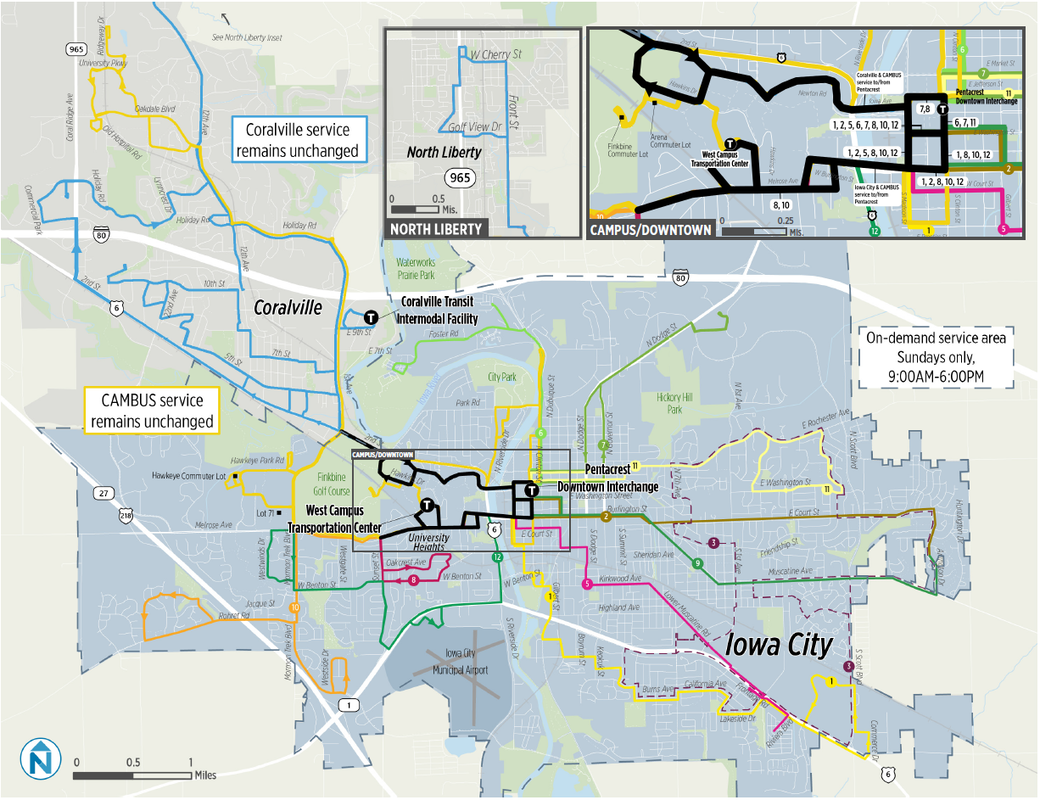
 RSS Feed
RSS Feed
